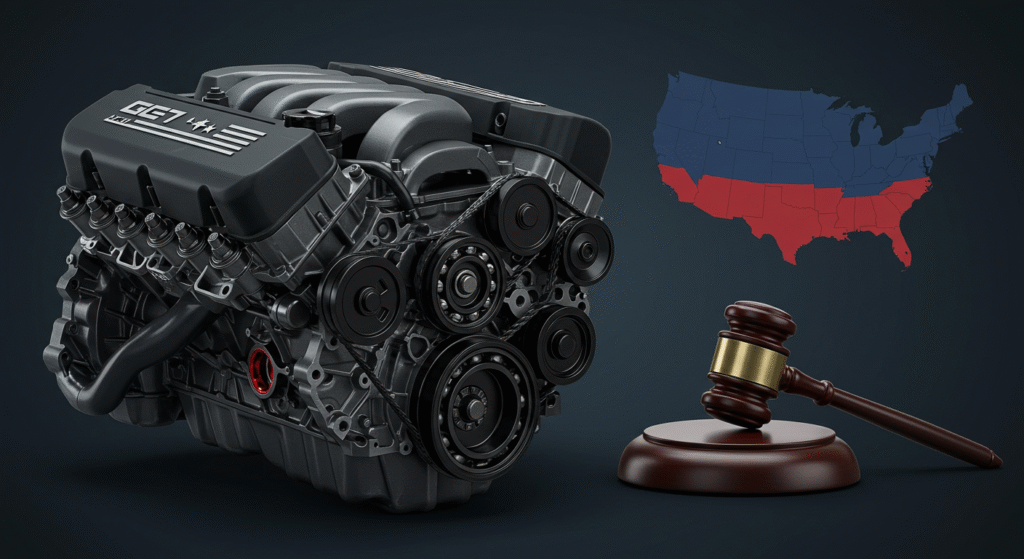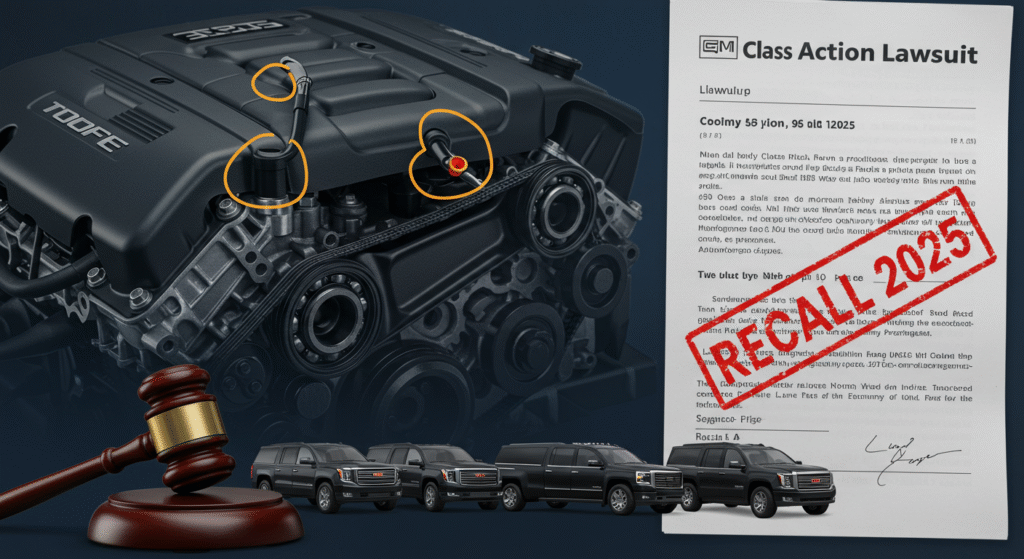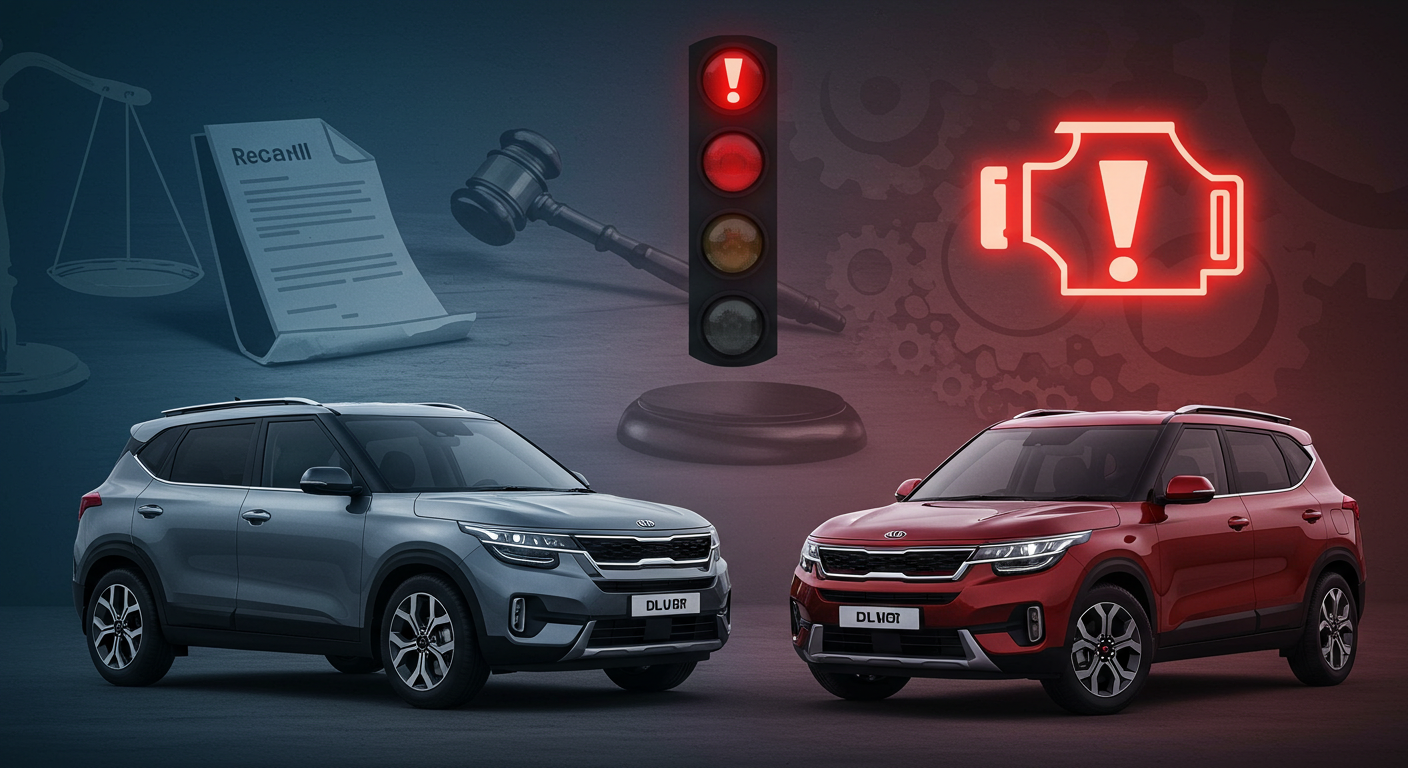Hi! I’m Orland Howell. I’ve spent four years writing about lawsuit settlements in simple words. I help law firms and people understand legal problems clearly. I’ve written lots of articles about car issues and group lawsuits. Today, I’ll explain the GM L87 engine lawsuit in very easy English. This guide is for people who own GM trucks or SUVs. It talks about the engine problem, the recall, which vehicles are affected, money you might get, and how to file a claim. All facts come from trusted places like the National Highway Traffic Safety Administration (NHTSA) and court papers. Let’s start!
What’s Wrong with the GM L87 Engine?
The L87 is a big 6.2-liter V8 engine made by General Motors (GM). It’s in large trucks and SUVs. It’s strong, with 420 horsepower. But many owners say it breaks too soon. The problem is with rod bearings. These are tiny parts inside the engine that help it run smoothly.
Dirt or bad building makes these bearings wear out fast. This can break other parts, like rods or the crankshaft. In bad cases, the engine stops working while you’re driving. This is called engine seizure. Your vehicle loses power, even on a highway. This is dangerous and can cause accidents.
Owners say this happens with few miles. Some engines break after just 1,200 miles. Others break at 14,000 miles. Usually, there’s no warning. You might hear knocking or banging sounds. Then, the check engine light might turn on, or the vehicle stops.
Lawsuits say GM knew about this problem since 2021 but kept selling the vehicles. This caused big trouble for drivers.
I’ve written about car problems for years. I know how upsetting this is. People use these trucks for work, family trips, or daily driving. When the engine fails, it leaves you stuck, costs money, and feels scary.
How Did This Problem Start?
Let’s look at what happened over time.
In 2019, GM started using the L87 engine in new vehicles. It replaced an older engine called the L86. At first, there were no big problems. By 2021, owners began complaining about engine failures on websites and to GM.
In January 2025, the NHTSA started checking after getting 39 complaints about engines stopping. They looked at over 877,000 vehicles. In February 2025, a man in Illinois filed the first lawsuit, called Powell v. General Motors. He said his 2023 GMC Yukon’s engine broke, and the new engine GM gave him was bad too.
In April 2025, GM started a big recall (N252494001) for 597,630 vehicles. Dealers had to stop selling these vehicles until they were fixed. In May 2025, more lawsuits came. A law firm called Hagens Berman filed a case for owners across the U.S., saying GM hid the problem.
In June 2025, GM sent letters to owners about the recall, and fixes began. But some owners said the fix didn’t help. In July 2025, a man named Brian Markus filed another lawsuit. He said the recall fix didn’t work for his 2024 GMC Sierra, which broke at 14,000 miles.
In August 2025, ten lawsuits joined into one big case in Michigan’s Eastern District Court. As of October 2025, the case is still going. GM says 2025 models are fixed, but many owners are still worried.
This shows how a small part caused a big problem. I’ve seen this in other car recalls, like fuel pump issues. When owners speak up, things change.
What’s Happening with the Recall?
The recall is active in October 2025. It started in April 2025. GM told dealers to stop selling affected vehicles until they were fixed.
What Does the Recall Fix?
Dealers check your engine for problems. If they find none, they do these things:
- Change the engine oil to a thicker type called 0W-40.
- Put in a new oil filter.
- Add a new oil cap.
- Give you new pages for your owner’s manual.
This takes about one hour and costs nothing.
If the engine has a problem, GM replaces the whole engine. New engines come from a factory in New York, but there aren’t enough. Some owners wait weeks. GM says only 3% of engines (about 17,929 out of 597,630) need a new engine.
How Do You Know If You’re Included?
GM sent letters to owners starting in June 2025 and ending by September 30, 2025. Check your mail or GM’s website. You can also go to nhtsa.gov/recalls and enter your 17-digit Vehicle Identification Number (VIN). Your VIN is on your dashboard or the driver’s side door sticker.
Extra Warranty
Good news: All fixed vehicles get a longer warranty. The engine is covered for 10 years or 150,000 miles from the date you bought the vehicle. This covers rod bearings and rods, even if you paid for fixes before the recall.
But lawsuits say this isn’t enough. Some owners want GM to buy back their vehicles or give full refunds.
I’ve written about recalls for years. I suggest getting the recall fix fast. It’s free and makes your vehicle safer. If you had problems before, save your repair bills and dates. These help with claims.
Which Vehicles Have This Problem?
Not all GM vehicles have the L87 engine. The recall covers models from 2021 to 2024 made after March 1, 2021. Lawsuits include 2019 and 2020 models, but they’re not in the recall. GM says 2025 models are safe.
Here are the affected vehicles, all with the 6.2L V8 L87 engine:
- Chevrolet: Silverado 1500 (2019–2024), Tahoe (2021–2024), Suburban (2021–2024)
- GMC: Sierra 1500 (2019–2024), Yukon (2021–2024), Yukon XL (2021–2024)
- Cadillac: Escalade (2021–2024), Escalade ESV (2021–2024)
About 600,000 vehicles in the U.S. are affected. The Chevy Silverado has the most, over 200,000. Cadillac models have about 50,000.
To check your vehicle, look under the hood for an “L87” label on the engine. Or enter your VIN at nhtsa.gov/recalls.
If you bought a used vehicle, you can still get the recall fix. The problem is in the engine, not who owns it.
I’ve written guides for vehicle owners before. Knowing if your vehicle is affected is the first step to feeling safe. These trucks and SUVs are used for family trips or work, so this matters.
Signs Your Engine Might Break
Watch for these signs to avoid getting stuck:
- Knocking or banging sounds from the engine.
- Check engine light comes on.
- Vehicle loses power while driving.
- Engine revs high but moves slowly.
- Metal bits in the oil when you change it.
- Engine won’t start.
If you see or hear these, don’t drive. Get the vehicle towed to a dealer. Driving is risky.
Owners say breakdowns happen fast. One drove four miles after hearing noises, then the engine stopped. Another stalled at 70 mph on a small road.
I’ve learned from writing about cars that spotting early signs can save you money. Use the right oil (0W-20 before the recall) and keep oil change records.
What’s the Lawsuit About?

By October 2025, over ten lawsuits have joined into one big case in Michigan’s Eastern District Court. The main case, Powell v. General Motors, asks for over $5 million.
The lawsuits say GM knew about the engine problem since 2021 from owner complaints but didn’t tell buyers. They also say the recall fix—an oil change—doesn’t fix the bearings. New engines might have the same problem, and affected vehicles are worth less now.
This lawsuit is a class action, meaning it covers all U.S. owners or renters of affected vehicles who didn’t buy them to resell. A class action is stronger than one person suing alone.
I’ve written about lawsuits for years. Class actions help owners stand up to big companies like GM and get fair results.
What Money Can You Get?
The lawsuit is still going, so there’s no final deal yet. But looking at past GM lawsuits, like one for fuel pumps that paid $35 million, here’s what you might get:
From the recall, free now:
- Engine check and fix.
- New engine if needed.
- Longer warranty for 10 years or 150,000 miles.
If the lawsuit wins, you might get:
- Money for your vehicle being worth less.
- Money back for repairs you paid for.
- Money for rental cars while your vehicle was fixed.
- Money for towing costs.
- Sometimes, a full refund or GM buying back your vehicle.
The amount depends on your situation. Past cases paid $500 to $5,000 per owner. If you got hurt in an accident because of the engine, a personal injury claim could pay more.
Some states, like California, have lemon laws that might give you a new vehicle or extra money. Talk to a lawyer. Many don’t charge unless you win.
How to File a Claim: Easy Steps
You can get the recall fix, join the lawsuit, or do both. Here’s how:
For the Recall
- Check your VIN at nhtsa.gov/recalls to see if your vehicle is included.
- Call GM at 1-800-222-1020 or your local dealer.
- Set up a free repair appointment.
- Ask for a loaner car if the repair takes a while.
For the Lawsuit
- Check if you qualify: You owned or rented an affected vehicle and had problems.
- Contact a law firm like Hagens Berman (hbsslaw.com) or Gibbs Mura (classlawgroup.com). They talk to you for free.
- Fill out their online form or call (like 1-888-381-2889 for Hagens Berman).
- Send proof, like repair bills, photos, your VIN, or towing receipts.
- Wait for updates from the law firm. Joining costs nothing.
There’s no deadline yet, but join soon to be included.
If you’re in California, look into lemon laws. Firms like Valero Law can help.
I’ve learned from writing that keeping records is super important. Save photos of warning lights, receipts, and dates. These documents are often used in claims.
Why This Is a Big Deal
This isn’t just about money—it’s about staying safe. An engine stopping at high speed is dangerous for families, workers, or anyone on the road. The NHTSA says this problem makes accidents more likely.
GM makes good trucks, but mistakes happen. The recall helps, but lawsuits push GM to do better.
In my four years writing about legal stuff, I’ve seen that trust comes when companies fix problems. GM says 2025 models are okay, but owners need proof.
What Owners Say
Real stories show how tough this is:
- A 2023 Tahoe owner said their engine broke during a family trip, leaving them stuck.
- A man named Brian Markus got two new engines but still feels scared to drive.
- Someone online said an oil change can’t fix bad bearings.
Owners love their trucks when they work but feel let down by this problem.
Tips from Me
Hi, it’s Orland again. I know legal stuff can be confusing. Here are my tips:
- Get the recall fix now. It’s free and keeps you safer.
- Some owners are joining the lawsuit to try to recover money. You can talk to a law firm to see if you qualify.
- If buying a used GM vehicle, drive it a lot and check its repair history.
- If selling, tell buyers about any issues to avoid trouble.
- Dealers should keep up with GM’s recall steps.
Check your oil often and use the right kind. Stay safe!
Wrapping Up
The GM L87 engine lawsuit is a big deal in 2025. If you own a 2021–2024 GM truck or SUV, like a Silverado, Yukon, or Escalade, the recall affects you. It’s free to get your vehicle fixed, and it keeps you safer. The lawsuit could give you money for repairs, towing, or a vehicle that’s worth less now. To join the lawsuit or get the recall fix, act fast. Contact GM for the recall or a lawyer for the lawsuit.
Disclaimer: This article is for informational purposes only and is not legal advice. Consult a qualified attorney for guidance on your specific situation. The author, Orland Howell, and any associated parties are not liable for any actions taken based on this content. Information is based on NHTSA and court documents as of October 3, 2025, and may change. No guarantees are made about lawsuit outcomes.
Explore More:
Contractor Ronald Lewis Ohio Lawsuit — AG sues over $70K in abandoned concrete jobs (May 2025)
Durango Racetrack Tail Light lawsuit: 2025 Class-Action Update & What Durango Owners Must Do

Orland Howell is a seasoned content writer with four years of deep expertise in crafting compelling and informative content about lawsuit settlements. With a keen understanding of legal nuances and a talent for translating complex topics into clear, engaging narratives, Orland helps law firms, legal professionals, and clients communicate effectively. His work spans blog posts, articles, whitepapers, and website content, all designed to educate, inform, and drive results. Passionate about empowering audiences with knowledge, Orland combines precision, creativity, and industry insight to deliver content that resonates and builds trust.






